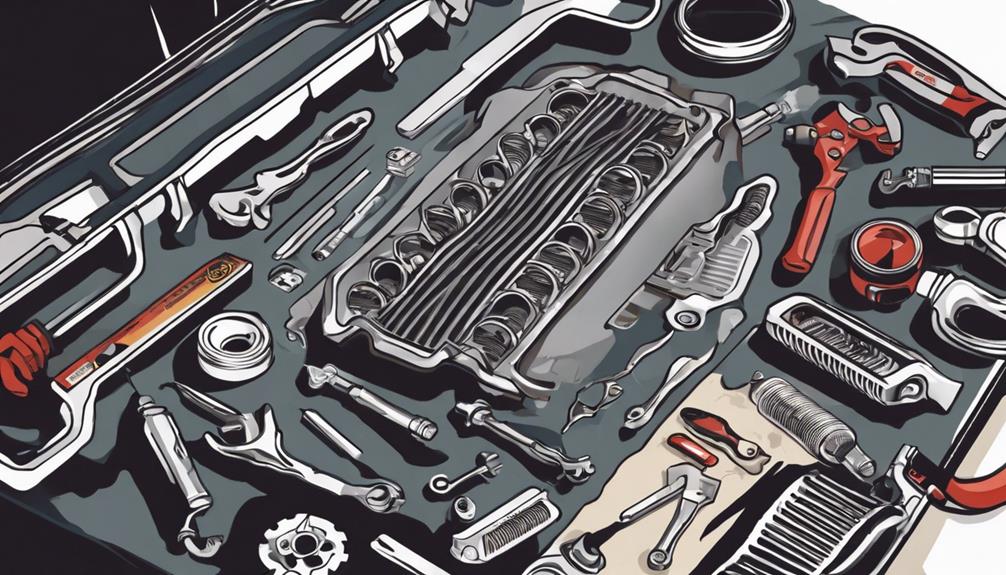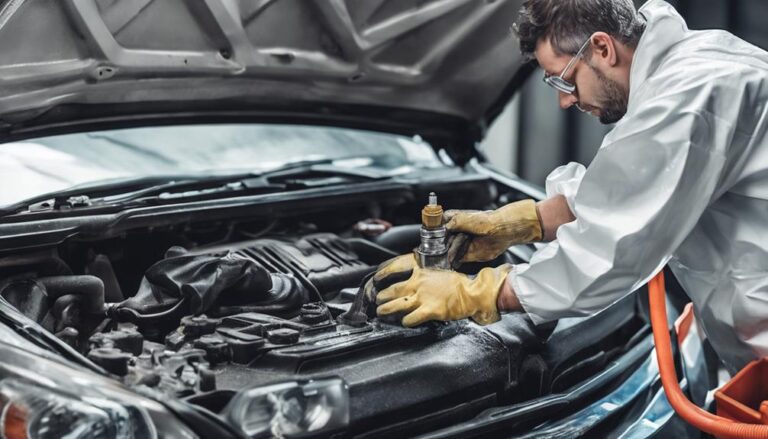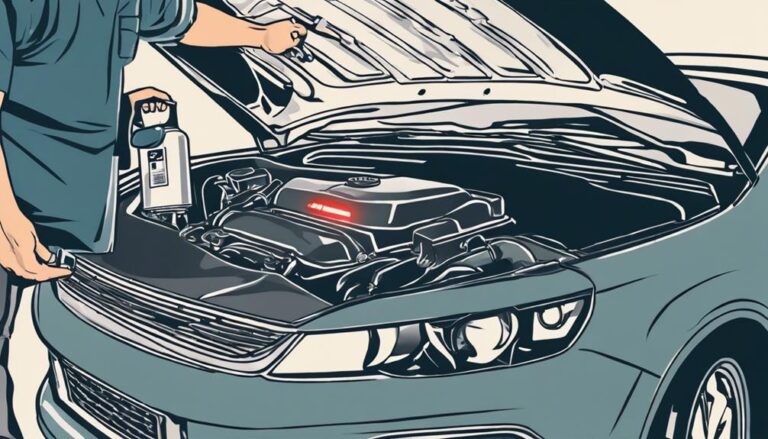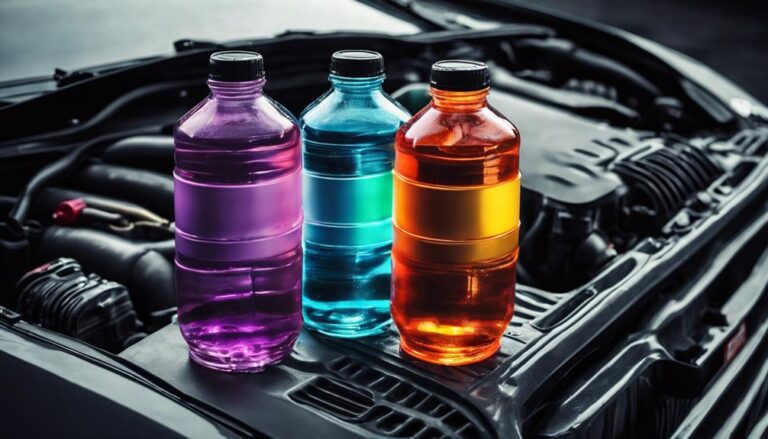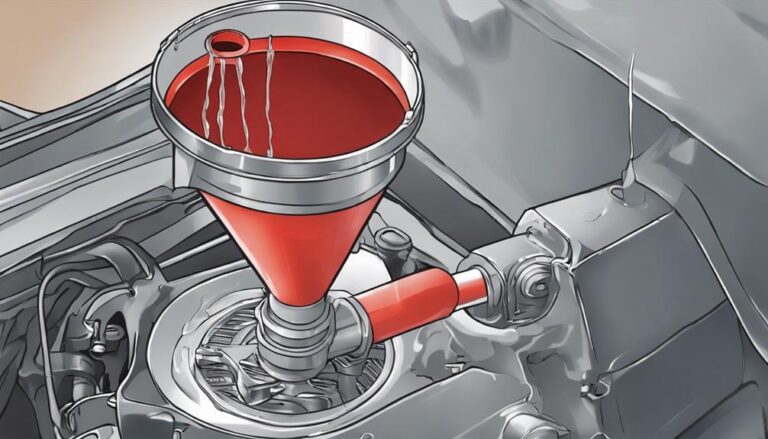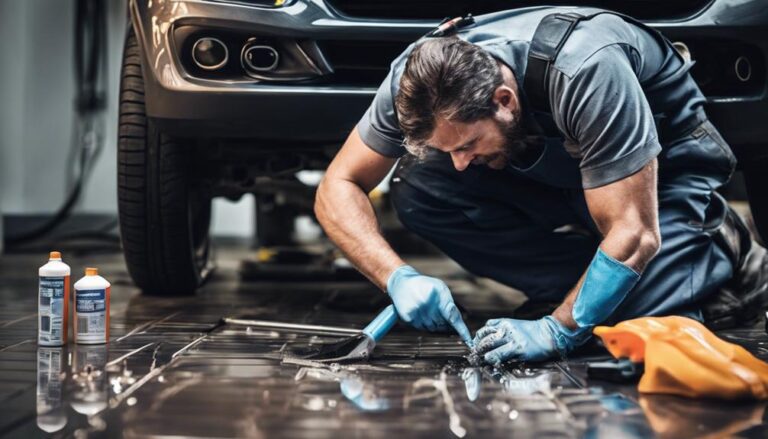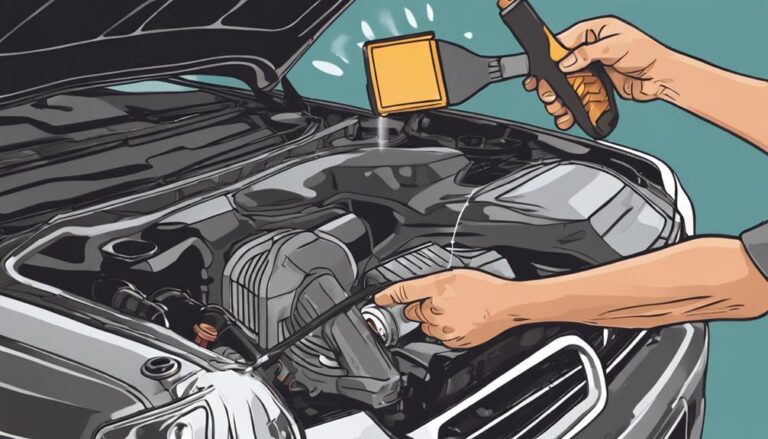Breaking Down Cooling System Maintenance Costs: 5 Key Expenses
When contemplating the complexities of cooling system maintenance, consider the quintessential quintet of expenses awaiting your scrutiny.
From labor costs to diagnostic charges, each element plays a pivotal role in the overall financial landscape of HVAC upkeep.
As you navigate through the intricacies of these five key expenditures, a clearer understanding will emerge, guiding you towards informed decisions and strategies to manage and optimize your cooling system maintenance budget effectively.
Key Takeaways
- Labor costs vary based on expertise and maintenance techniques.
- Parts quality and warranty coverage impact replacement expenses.
- Professional service fees range from $70 to $550.
- Diagnostic testing and proactive maintenance save long-term costs.
Cooling System Maintenance Labor Costs
When considering cooling system maintenance labor costs, it's essential to account for the wide range of prices that can be influenced by factors such as technician expertise and the specific maintenance requirements of the system. Efficient maintenance techniques play a crucial role in controlling labor expenses.
Implementing cost-saving measures and exploring alternatives can help optimize the efficiency of cooling system maintenance labor. By utilizing efficient maintenance techniques, you can ensure that the work is completed in a timely manner, reducing labor costs associated with prolonged maintenance tasks.
Exploring alternative maintenance methods tailored to the specific needs of your cooling system can further lower labor expenses. Technicians with specialized expertise in these alternative methods can offer a more cost-effective approach to maintaining your cooling system.
Parts Replacement Expenses
For efficient management of cooling system maintenance costs, understanding the factors influencing parts replacement expenses is crucial.
When it comes to parts replacement expenses, there are a few key considerations to keep in mind:
- Part quality considerations: Opting for high-quality parts can sometimes be pricier upfront but may result in longer-lasting solutions, reducing replacement needs in the future.
- Warranty coverage: Checking if your cooling system parts are under warranty can help offset replacement costs, especially for expensive components like compressors.
- DIY options, Troubleshooting techniques: Simple troubleshooting techniques can sometimes help identify issues that don't necessarily require a full part replacement, potentially saving you money on unnecessary expenses.
Professional Service Fees

Professional service fees for cooling system maintenance cover technician expertise, labor costs, and any necessary parts replacements, varying between $70 and $550. The variation in cost is influenced by factors such as the level of technician expertise required and the location impact. Technicians with higher levels of expertise may charge more for their services due to their specialized knowledge and skills in handling complex cooling systems. Additionally, the location where the maintenance is being performed can also impact service fees, with urban areas typically having higher labor costs compared to rural locations.
When considering professional service fees for cooling system maintenance, it's essential to weigh the expertise of the technician against the overall cost. While higher fees may initially seem prohibitive, investing in a skilled professional can lead to more effective maintenance and potentially prevent costly repairs in the future. By understanding the role of technician expertise and the influence of location on service fees, you can make informed decisions regarding the maintenance of your cooling system.
Diagnostic Testing Charges
Performing diagnostic testing on cooling systems is essential for identifying potential issues and ensuring optimal performance. When it comes to diagnostic testing charges, here's what you need to know:
- Testing Accuracy: Diagnostic testing charges typically range from $50 to $200, covering the cost of assessing the system's components with precision to pinpoint any existing or potential issues accurately.
- Diagnostic Tools: Professional technicians utilize advanced diagnostic tools to evaluate the performance and efficiency of your cooling system thoroughly. These tools help in identifying even minor deviations that may lead to larger problems if left unattended.
- Investment in Prevention: Investing in diagnostic testing is a proactive approach that can help prevent unexpected breakdowns and costly repairs. By diagnosing issues early on, you can save money in the long run and ensure your cooling system operates efficiently.
Coolant Refill and Disposal Costs
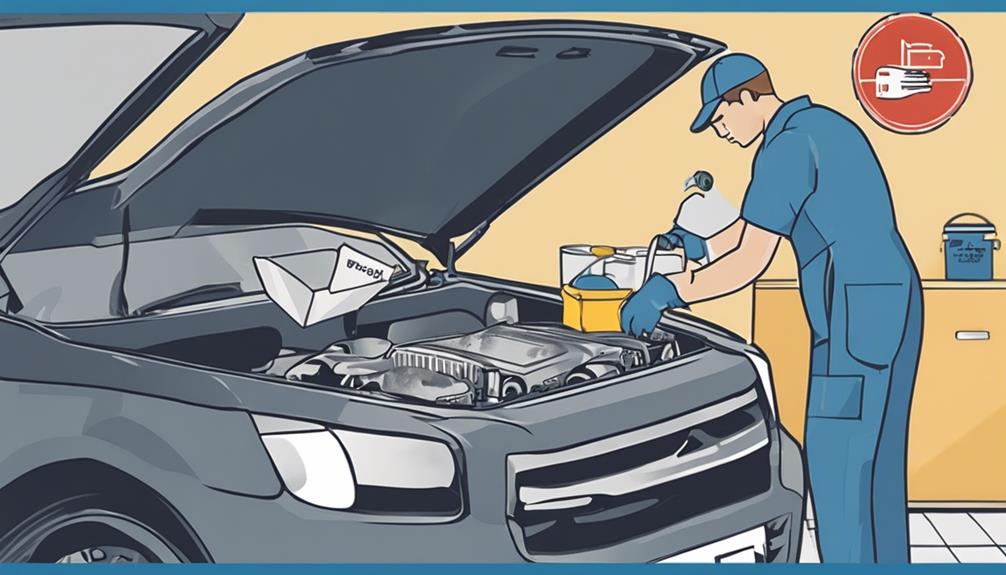
When maintaining your cooling system, understanding the costs associated with coolant refill and disposal is crucial for budgeting and system efficiency. Coolant refill costs for HVAC systems typically range from $200 to $450, depending on factors like system size, type, and refrigerant used. Additionally, disposal costs for old coolant can tack on an extra $50 to $150 to the overall expenses. Proper disposal of old coolant is not only a financial consideration but also essential to prevent environmental harm and ensure optimal system performance. Regular coolant maintenance is key to avoiding system breakdowns and expensive repairs down the line.
| Cost Type | Average Cost Range |
|---|---|
| Coolant Refill | $200 – $450 |
| Disposal of Old Coolant | $50 – $150 |
| Environmental Impact | Proper disposal crucial to prevent harm |
| Cost Saving Tips | Recycle coolant where possible |
Frequently Asked Questions
What Are the Annual Maintenance Costs for HVAC Systems?
Annual HVAC maintenance costs typically range from $70 to $550. Regular upkeep and inspections, costing about $200 per visit, enhance energy efficiency and prevent expensive repairs. Maintenance contracts offer additional benefits, with fees ranging from $150 to $500 annually.
What Are Maintenance Expenses?
You need to understand maintenance expenses for your cooling system. These include repair services, replacement parts, preventive care, and emergency repairs. Proactive measures range from $200 to $550, while reactive costs can go up to $1,800.
What Are the Components of Maintenance Cost?
When considering maintenance costs, you'll find various components like labor, parts, and repairs. A cost breakdown reveals expenses for coil cleaning, filter replacement, and refrigerant checks. Understanding these maintenance components aids in effective budgeting.
What Is an Example of a Maintenance Cost?
Repair costs and labor fees can vary significantly. An example of a maintenance cost is coil cleaning, which typically ranges from $150 to $300. Regular upkeep like this can prevent breakdowns and costly repairs.
Conclusion
In conclusion, managing cooling system maintenance costs requires careful planning and budgeting. By understanding the key expenses such as labor, parts replacement, service fees, diagnostic testing, and coolant refill, you can effectively control your maintenance budget.
Remember, staying ahead of potential issues and implementing cost-saving measures can help avoid any budgetary 'coolant leaks' and keep your cooling system running smoothly and efficiently. Stay proactive and strategic in your maintenance approach to ensure optimal system performance.

